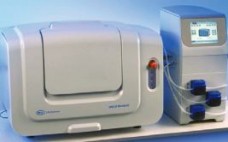Many potentially therapeutic products involve the culture of stem cells. Their commercial success depends on the development of scalable good manufacturing practice (GMP) technologies that can both robustly and cost-effectively produce very large numbers of cells. Through many improvements and innovations in bioprocessing operations over the years, fed-batch suspension culture has remained the most common mode for large-scale biopharmaceutical manufacturing. However, some recent events suggest that may be changing (1,2). For the culture and expansion of stem cells, large-format adherent…
Search Results for: regenerative medicine
Single-Use Bioreactors and Microcarriers
Cell-based therapies hold promise for treating many acute and chronic diseases (1). Optimism surrounding that therapeutic potential has driven the initiation of multiple clinical trials in pursuit of such treatments. Procedures for preparing these therapeutic agents begin with selective isolation of cells from desired tissues. That is followed by ex vivo expansion of cells of desired phenotype and functionality. Once expanded to acceptable levels, cells are stored to preserve their viability during transportation to treatment facilities. The final step in…
NeoStem Expands Treg International Patent Portfolio with Granting of Patent in Japan
NeoStem, Inc. New York, February 4, 2014 – NeoStem, Inc. (NASDAQ:NBS) (“NeoStem” or the “Company”), a leader in the emerging cellular therapy industry, today announced the expansion of intellectual property protection surrounding the Company’s T-regulatory cell (“Treg”) program with the grant of Japanese Patent Number 5409827 titled “Methods for the Isolation and Expansion of Cord Blood Derived T Regulatory Cells.” This grant further expands the scope and reach of NeoStem’s Treg patent estate internationally. Through its Treg program, NeoStem is…
NeoStem Subsidiary Progenitor Cell Therapy Announces Cell Therapy Manufacturing Collaboration with ATMI
NeoStem, Inc. November 4, 2013 New York, NY. NeoStem, Inc. (NASDAQ: NBS), a leader in the emerging cellular therapy industry, and its subsidiary, Progenitor Cell Therapy, LLC (“PCT”), an internationally recognized contract development and manufacturing organization, announced today that PCT has entered into a collaboration with ATMI, Inc. (NASDAQ: ATMI), a global technology company and leader in single-use bioprocess solutions. As industry leaders, PCT and ATMI will collaborate on a non-exclusive basis enabling PCT and PCT’s affiliates to offer to…
From the Editor
With the approaching holiday season and the end of the year — how can that be? — we find ourselves pretty well settled into plans for our 2014 editorial calendar. As a team, we’ve met during the summer to brainstorm and share the results of our research into the subjects of next year’s special reports and supplements. What should we focus on next? What old themes and supplement topics need to be revisited, and what new topics…
Standards for Ancillary Materials Used in Cell- and Tissue-Based Therapies
Cell- and tissue-based therapies are being used increasingly to treat many diseases for which currently no other adequate treatment options are available. These products contain human or animal cells that can replace, regenerate, or augment a recipient’s diseased, dysfunctional, or injured cells, tissues, or organs. Cells or tissues might be unmanipulated, or their biological characteristics can be altered ex vivo before administration of the final product to patients. Examples of cell therapies range from traditional blood transfusions to recent approaches…
Better Cells for Better Health
Since its inception 35 years ago, the biennial meeting of the European Society for Animal Cell Technology (ESACT) has built on a tradition of combining basic science and applications into industrial biotechnology to become the international reference event in its subject matter. Every other year, this gathering of academics and industry professionals features a famously exciting social program and an extensive vendor/supplier exhibition specific to animal cell technology. ESACT meetings are much-anticipated international venues for information exchange, inspiration, networking, and…
Bioengineered Ears: The Latest Advance
Physicians at Weill Cornell Medical College (WCMC) and biomedical engineers at Cornell University have succeeded in building living facsimiles of human ears. They believe that their bioengineering method will finally achieve the goal of providing normal-appearing new ears to children born with a congenital ear deformity. The researchers used three-dimensional (3D) printing and injectable gels made of living cells. Over a three-month period, the ears steadily grew cartilage to replace the collagen used in molding them. The study’s colead-author is…
2012 in Review
As children growing up, we could barely contain our anticipation for those banner, milestone years: entering first grade, becoming a teenager, turning 16 and then 18, high-school graduation. But even the most innocuous “in-between” years saw notable change and maturation, and 2012 was just such a year for the growing cell therapy sector. Although it is not likely to be noted as a pivotal or breakthrough year, 2012 nonetheless delivered some significant and welcome signposts of continued sector maturation. Here…
Automation of Cell Therapy Biomanufacturing
Biomanufacturing automation is an established mission-critical step in the commercialization pathway for conventional therapeutics, including small molecules and monoclonal antibodies (MAbs) (1). The prospect of a potential biologic progressing into late-stage clinical trials without a robust biomanufacturing strategy to support at least pilot-plant scale bioprocessing is simply unthinkable. Conversely, the cell therapy industry (or at least a significant proportion of it) regard this as a trend that is unlikely to be mirrored as the industry develops. The aim of this…

